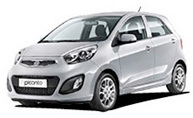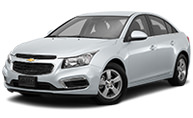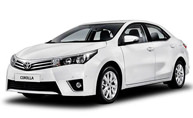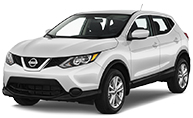Sao Paulo things To Do - activities, hotels, golf courses & car rental
The Sao Paulo hotel and activities guide offers stay over guests and cruise ship visitors information and discount reservations for hotels, villa rentals, car rentals, activities and shore excursions in Sao Paulo.
Plan your trip from home and save a lot versus booking via your cruise ship or travel agent. Book your resort, hotel, car rental or activity in Sao Paulo with the Sao Paulo Hotels & Travel Guide at up to 50% less then the regular published rates.
The city is home to a diverse range of neighborhoods, each with its own unique character and attractions. Some popular areas to visit include the trendy neighborhoods of Vila Madalena and Pinheiros, which are known for their street art and trendy bars and restaurants. The city center, also known as the "Historic Center," is home to many important landmarks such as the São Paulo Museum of Art and the São Paulo Cathedral.
São Paulo is also a great destination for shopping, with a wide variety of options available to suit every budget. Rua Oscar Freire is a popular spot for luxury shopping, while the 25 de Março street market is perfect for those looking for a more authentic shopping experience.
In addition to its many cultural and commercial offerings, São Paulo is also home to many beautiful parks and gardens, such as the Ibirapuera Park and the Jardins neighborhood, which is known for its charming colonial-style houses and leafy streets.
Overall, São Paulo is a lively, cosmopolitan city that offers something for everyone. Whether you're interested in art, culture, shopping, or nature, you're sure to find plenty to see and do here.
Sao Paulo Travel Information
Sao Paulo A huge city full of restaurants, nightlife and accomodations.
São Paulo, or Sampa as it is also often called, is also probably one of the most underrated cities tourism-wise, often overshadowed by other places in the Brazilian sun & beach circuit such as Rio de Janeiro and Salvador. It is in fact a great city to explore, the exquisite way of living of its inhabitants, not to mention the world-class restaurants and diverse regional and international cuisine available to all tastes. If there is a major attraction to this city, it is the excellent quality of its restaurants and the variety of cultural activities on display.
Municipality
Note: the region of Avenida Paulista is partly in the Center, West, and South-Central, and its number of attractions, as well as its peculiar characteristics, justifies it having its own section.
Understand
São Paulo, together with Rio de Janeiro, is the spot where most visitors from abroad land in Brazil. While a complete experience of the city would take a few weeks (since the lifestyle of Paulistanos and every-day routine in the city are huge attractions in themselves), it's possible to visit all major sites within three days. Staying a little longer than that is always a nice idea. As the financial and cultural center of the country, the city is a sea of possibilities. Sightseers will be disappointed however, because the city does not have a single major tourist attraction.
The city has a so called clean city law that prohibits advertising such as billboards. Likewise, heavy trucks are not allowed on most streets except during the middle of the night. These are small but constant improvements which make the city more beautiful and pleasant to live in.
People
The citizens of São Paulo have a reputation as hard-working and industrious or shallow money-grubbers. It is common to hear that the people in São Paulo work while the rest of Brazil relaxes; even though many say this, it is plainly wrong. It is a fact, nonetheless, that the city of Sao Paulo alone actually contributes with 15 percent of the country's gross national product (45 percent if the entire São Paulo state is taken into account).
But when Paulistanos are not working, they are clubbing. The city nightlife is as intense as it gets, which makes going to a club a total must-do. Everything is possible in a city that doesn't dare to blink.
Languages
Locals are often friendly, and will try to help visitors, but language difficulties can offer a barrier. It's a good idea to print out some key phrases.
A good tip is keep your destinations and addresses on paper, in case you cannot find anyone who speaks, you can show them the note.
Electricity
Many electric outlets will accept both the U.S. / Canada type plugs and the parallel twin round pins used in many countries in Europe (low current "europlug"). It is helpful to carry a world-travel adapter in any case, since other countries in South America vary in electrical plug formats and shapes. Some outlets for computers have the USA two flat pins and one round ground pin. A new, exclusive to Brazil shape of plug with 3 rounded pins (similar to the Euro one, but with another pin in the middle, slightly above) was introduced in 2009 and became the standard for newer electronic equipment. However, and likely to the fact that numerous people bring their electronics from abroad to avoid the heavy-taxed price of the imports, it's still pretty common to find the older outlets or ones that can fit several kinds (the outlet for the new 3-pin Brazilian plug is naturally compatible with Europe's twin round pins).
Get in
By plane
Guarulhos International Airport (GRU)
Congonhas Airport (CGH)
Get around
Even these means of transport can be uncomfortably crowded during peaks, and only a very limited carry-on is recommended. You can check the SPTrans website, which is the city's transport administration department. There you can get itineraries using all the city's public transportation options.
Bilhete Único
The Bilhete Único is a transport smartcard that is used for paying fares on buses, subways, and trains. In essence, a single billing of the card grants a person up to four trips in São Paulo's public transportation system with free transfers between the subway system and buses within 3 hours.
By metrô and train
The rail network, composed of metro (subway) and surface trains, is the method of transportation a tourist is likely to use the most while visiting São Paulo. The metro is modern, safe, clean and efficient; the quality of surface trains varies, but those in more touristic areas area as good as the metro. An update-to-date map of the rail network can be found in this link.
What to see
The avenue and its surroundings, such as Rua Augusta, Alameda Santos and Rua Oscar Freire, contain numerous shop galleries, art galleries, theatres, movie theaters, pubs, hotel, coffe shops, bookstores, and gourmet restaurants. Gay nightlife is intense on Consolacao and Haddock Lobo Streets.
Historic center
Regarded as an "ugly and gray concrete jungle" even by many Paulistanos, São Paulo's city center indeed does not conform to a standard definition of "beauty", but nonetheless, it has become a source of inspiration for countless artists and photographers who can see on it much of the personality of the city.
Watch football/soccer
Estádio Cícero Pompeu de Toledo (Morumbi), Brazil's third largest football stadium.
Estadio de Morumbi is not easily reachable from the center (e.g Av. Paulista) by public transport. A taxi from Av. Paulista costs about 50 R$ (Nov. 2014). Invest this money instead of splitting the trip to Morumbi into metro and Taxi combinations, it will only save you about 10 R$. If you want to watch a game.
Car Rental in Sao Paulo
If you need to rent a car in Sao Paulo we have the perfect partner for you. Rentalcargroup has very competitive prices in Sao Paulo. They work with all major car rental companies in the world as well as local rental car companies, they work with companies like Alamo, Enterprise, Europcar, Avis, Budget, etc… . Check now their incredible competitive rates.








 English (Canada)
English (Canada) Español (Argentina)
Español (Argentina) Español (Chile)
Español (Chile) Español (Colombia)
Español (Colombia) Español (México)
Español (México) Español (Perú)
Español (Perú) Español (Venezuela)
Español (Venezuela) Français (Canada)
Français (Canada) Português (Brasil)
Português (Brasil) English
English Dansk
Dansk Deutsch (Österreich)
Deutsch (Österreich) Deutsch (Schweiz)
Deutsch (Schweiz) Deutsch
Deutsch English (UK)
English (UK) English (Ireland)
English (Ireland) Español
Español Français (Belgique)
Français (Belgique) Français (Suisse)
Français (Suisse) Français
Français Italiano (Svizzera)
Italiano (Svizzera) Italiano
Italiano Nederlands (België)
Nederlands (België) Nederlands
Nederlands Norsk
Norsk Português (Portugal)
Português (Portugal) Svenska
Svenska English (Australia)
English (Australia) English (Hong Kong)
English (Hong Kong) English (India)
English (India) English (Malaysia)
English (Malaysia) English (New Zealand)
English (New Zealand) English (Philippines)
English (Philippines) English (Singapore)
English (Singapore) 日本語
日本語 English (South Africa)
English (South Africa)